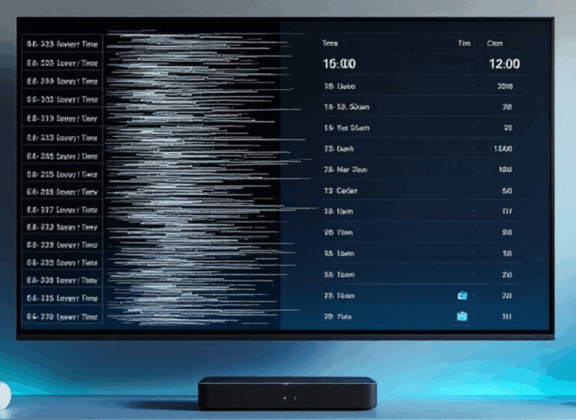For many IPTV enthusiasts, few things are more frustrating than opening the electronic program guide (EPG) and finding that showtimes do not align with actual broadcasts. Instead of enjoying seamless access to live TV, viewers often encounter schedules that are shifted by an hour or more. This issue is especially relevant to customers purchasing IPTV set-top boxes and media players online, where devices are designed for a global market and must handle multiple time zones and daylight saving time (DST) changes.
These discrepancies aren’t merely cosmetic. An inaccurate EPG can lead to missed broadcasts, failed recordings, or simply a confusing viewing experience. By understanding why these shifts occur and how to correct them, IPTV users can restore confidence in their devices and enjoy uninterrupted entertainment.
The Time Zone Challenge
EPG data is generated with time stamps, almost always referenced to Coordinated Universal Time (UTC). When an IPTV device receives these time stamps, it must convert them into the user’s local time. Any error in time zone settings—whether caused by incorrect device configuration or poor data from the EPG provider—can produce noticeable shifts in the guide.
Most modern IPTV hardware gives users the option to configure time zones manually. However, some devices rely on automatic detection based on IP address or network data, which may be inaccurate for people using VPNs, traveling, or living near time zone borders. This makes manual confirmation of time zone settings one of the most effective steps in fixing EPG mismatches.
Understanding Daylight Saving Time (DST)
Daylight saving time is another major factor in EPG inaccuracies. Twice a year in many regions, clocks move forward or backward by an hour, and not all systems update at the same pace. If either the device or the EPG source fails to reflect these changes, the result is a misaligned schedule.
Some IPTV set-top boxes automatically handle DST adjustments, while others expect the user to activate or disable this feature manually. If there’s a conflict between the device’s internal DST rules and the EPG data, the guide can remain out of sync for weeks. Checking the DST setting after every seasonal clock change helps prevent such discrepancies.
How to Correct EPG Shifts
The starting point for any EPG troubleshooting is the device’s internal clock. It should accurately match the current local time. Most IPTV boxes can synchronize with online time servers, ensuring they are correct to the second.
Once the device clock is verified, the next step is reviewing the time zone setting. Manually choosing the proper time zone and disabling automatic detection—if possible—will eliminate most common errors. If the EPG still shows an offset after these adjustments, many devices or apps allow users to apply a custom offset (for example, +1 or –2 hours) to align the schedule with the broadcast. This is often the fastest solution while waiting for the EPG provider to update its data.
Firmware, Software, and App Settings
Frequent firmware updates are essential for IPTV devices to stay synchronized with time changes and EPG standards. These updates typically improve time-handling algorithms, refine DST recognition, and fix known bugs related to EPG display. Customers should ensure their device or app is running the latest version available.
Additionally, IPTV apps installed on smart TVs or media players sometimes maintain their own time zone settings independent of the system. Users should review both the app and device configurations to ensure consistency. This alignment prevents conflicts that can lead to persistent scheduling errors.
Choosing Reliable EPG Data Sources
The accuracy of EPG data depends heavily on the source. Free or unofficial EPG feeds may lack precise time zone or DST updates, while reputable providers regularly refresh their data to reflect local changes. Customers benefit from choosing region-specific feeds whenever possible, as these are tailored to local broadcast schedules and reduce the risk of mismatches.
Retailers selling IPTV boxes and media players can improve customer satisfaction by highlighting recommended EPG providers and offering guidance on proper configuration. This proactive support helps customers get the best possible experience from their devices.
Although EPG mismatches can be disruptive, they are usually easy to resolve with the right approach. By verifying device clocks, setting time zones manually, checking DST adjustments, applying offsets when necessary, and choosing reliable EPG feeds, IPTV users can restore accurate scheduling quickly. Regular firmware and software updates keep these fixes stable over time. With a solid understanding of how time zones, DST, and EPG data interact, customers can enjoy dependable program listings and a smooth IPTV experience.
